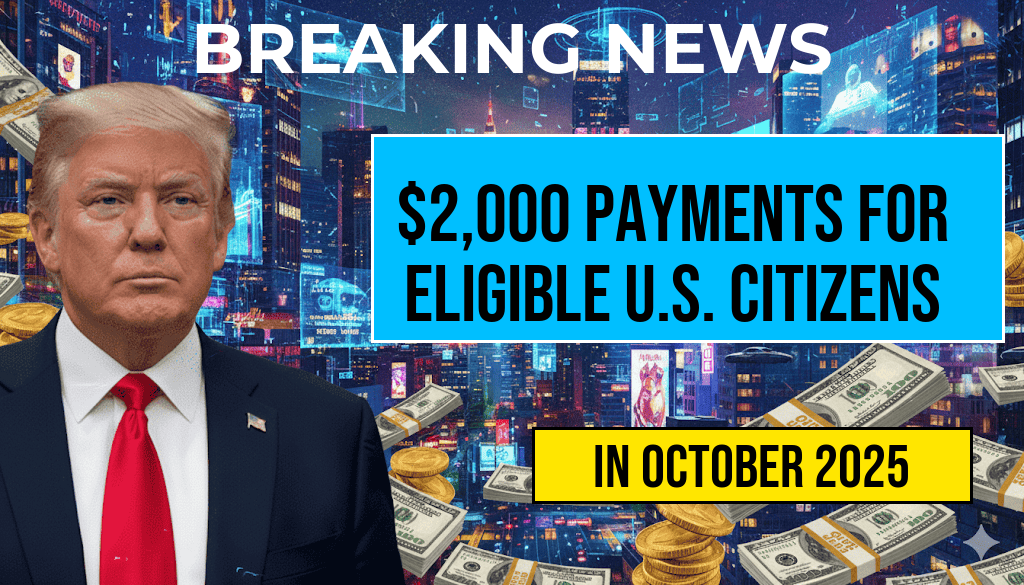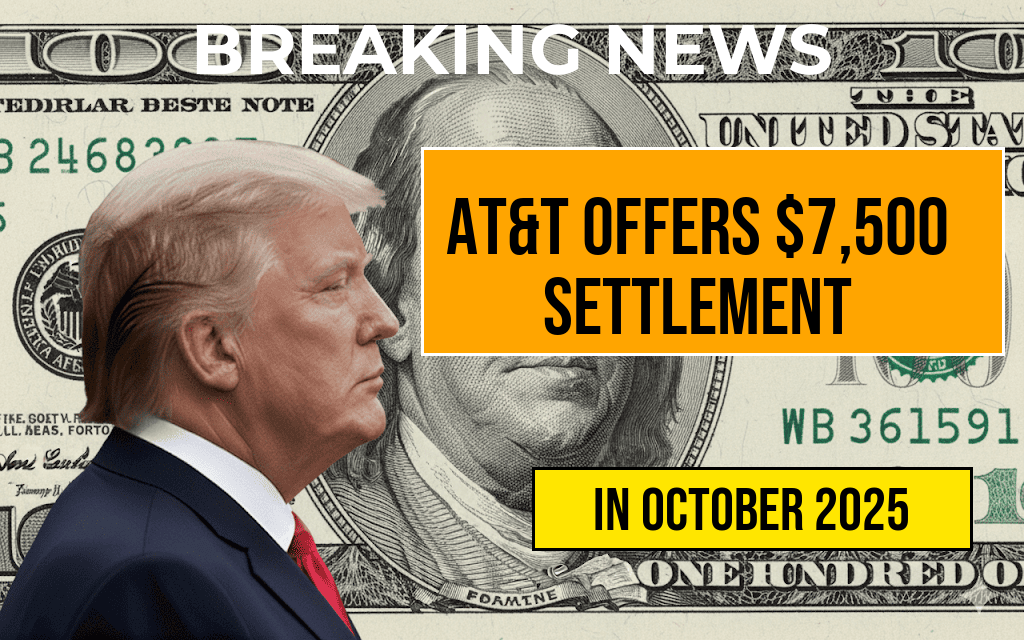Eligible U.S. citizens are set to receive a one-time $2,000 direct deposit in October 2025, as part of a new federal initiative aimed at providing targeted financial relief. The payment, which is expected to reach millions of Americans, is designed to support households facing economic challenges and to stimulate local economies. This assistance is expected to be distributed automatically via the Internal Revenue Service (IRS), with most recipients qualifying based on specific eligibility criteria related to income and filing status. The announcement has sparked considerable interest, prompting many to review their eligibility details and prepare for the upcoming deposit. The IRS has outlined a clear schedule for the payments, along with guidelines to ensure smooth processing and delivery. This initiative underscores ongoing federal efforts to bolster economic stability for individuals and families across the nation.
Who qualifies for the $2,000 direct deposit?
Eligibility criteria overview
- Income thresholds: The program primarily targets households with annual income below a specified limit, generally set at or below 150% of the federal poverty level.
- Filing requirements: Applicants must have filed a federal tax return for the most recent tax year, or meet alternative criteria for those who are not required to file.
- Residency status: Only U.S. citizens residing legally within the United States are eligible to receive the payment.
- No prior exclusions: Individuals convicted of certain federal or state crimes or involved in fraudulent activities may be disqualified.
Additional eligibility considerations
- Recipients must have a valid Social Security number and a bank account linked to their tax records for direct deposit.
- Dependents or household members are not eligible for separate payments under this initiative, but their inclusion may influence household income calculations.
- Individuals receiving other federal assistance, such as Supplemental Nutrition Assistance Program (SNAP) or Social Security, may also qualify if they meet income and filing criteria.
Payment schedule and distribution process
Anticipated timeline
| Date Range | Expected Actions | Details |
|---|---|---|
| October 1–7 | Notification and verification | IRS confirms eligibility, verifies bank information |
| October 8–15 | Initial payments issued | Most recipients receive funds via direct deposit |
| October 16–31 | Secondary distribution | Remaining eligible individuals, including those who update banking info, receive deposits |
How payments are processed
The IRS will leverage existing tax data and bank information to facilitate direct deposits. Recipients are encouraged to ensure their banking details are current via the IRS’s online portal to avoid delays. Those without bank accounts may receive paper checks or prepaid debit cards, though the preference is for electronic transfers, which expedite the process and enhance security.
IRS guidelines and application process
Verifying eligibility
The IRS will use existing tax return data and Social Security information to confirm eligibility automatically. Individuals who have already filed their 2024 tax returns will be assessed based on that information. For those who did not file or have recently experienced changes in income or residency, updates can be made through the IRS online portal or by submitting additional documentation.
How to prepare for the payments
- Update banking information: Ensure your bank account details are current in the IRS database to facilitate direct deposit.
- Check your eligibility: Review income and filing status against the official criteria published on the IRS website.
- Stay informed: Sign up for IRS alerts and check the official IRS website for updates on payment status and potential issues.
Potential challenges and considerations
While the program aims for broad reach, some eligible recipients may face delays due to mismatched banking information or pending verification processes. The IRS has emphasized that individuals should promptly address any discrepancies or requests for additional documentation to ensure timely receipt of funds. Additionally, recipients should be cautious of scams or fraudulent schemes claiming to facilitate early access or additional payments, as official communications will come directly from the IRS via secure channels.
Impact and significance
This $2,000 direct deposit initiative reflects a strategic approach to providing immediate financial relief, especially amid ongoing economic uncertainties. By targeting lower-income households and streamlining distribution through direct deposits, the federal government aims to bolster consumer spending, reduce financial strain, and promote economic resilience. Experts suggest that such targeted aid can have a meaningful impact on household stability, particularly for those most vulnerable to economic fluctuations.
For comprehensive details on eligibility and to verify your information, visit the official IRS website. Staying informed and prepared can help ensure that eligible Americans receive this financial support without unnecessary delays.
Frequently Asked Questions
Who are eligible to receive the $2,000 direct deposit in October 2025?
Eligible U.S. citizens must meet specific criteria outlined by the IRS guidelines to qualify for the $2,000 direct deposit payment scheduled for October 2025. This typically includes filing a tax return and meeting income or other eligibility requirements.
When will the $2,000 payments be issued in October 2025?
The payment schedule for the $2,000 direct deposit begins in early October 2025, with payments expected to be distributed throughout the month based on processing times and eligibility verification.
What are the eligibility requirements for the $2,000 direct deposit?
Eligibility is primarily based on filing requirements, income thresholds, and citizenship status. Specific criteria include filing a tax return, having a valid Social Security number, and meeting income limits set by the IRS.
How can I ensure my eligibility and receive the payment?
To ensure eligibility, verify that your tax information is up to date and accurately reported to the IRS. You should also check the status of your payment using IRS tools and ensure your direct deposit information is correctly registered.
Are there any other important IRS guidelines related to this payment?
Yes, the IRS guidelines specify that recipients must meet certain filing deadlines and eligibility criteria. Additionally, the IRS recommends keeping records of your payment receipt and regularly checking for updates regarding any changes or additional requirements.








